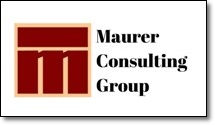Focused planning is a key component for every successful business. Business planning, strategic planning, marketing plans and short term project plans count. Even succession planning and retirement planning are important. In whatever format, all focused plans include clear direction to a company’s efforts to succeed.
 Those who regularly read our ‘Designing Strategies‘ newsletter and blog know that I am an avid believer in planning for success. I am convinced that the planning process is the most important thing business leaders and managers can do to assure achieving their unique vision of success. Here are five important steps that need to go into every strategic planning process to assure that all focus is on growth and success. You can’t reach your vision without focus being in that direction.
Those who regularly read our ‘Designing Strategies‘ newsletter and blog know that I am an avid believer in planning for success. I am convinced that the planning process is the most important thing business leaders and managers can do to assure achieving their unique vision of success. Here are five important steps that need to go into every strategic planning process to assure that all focus is on growth and success. You can’t reach your vision without focus being in that direction.
Step 1 – Environmental scanning
It is important to understand what is happening both inside and outside your company before beginning your planning process. Every business is affected in some way by external influences like the social environment, the economy, political actions, the environment and technology. Knowing how those influences can affect your business can make or break the effectiveness of your plans for the coming year.
Internal influences are just as important as those on the outside when it comes to successful business strategies. A clear grasp of your firm’s strengths and weaknesses and how they can be used to your advantage, should never be overlooked. These are things you actually have some control over, so take the time to review them annually to see where your team excels and what areas need some attention.
Step 2 – Create the Strategic Plan
A brief, detailed plan is better than no plan at all. Planning need not be a long, drawn out process that results in an enormous, intimidating document. That approach usually results in the plan in a binder on the shelf, covered with dust, or shoved into a folder and added to an already overstuffed file drawer.
Identify goals, objectives and strategies that are related to your company culture, its mission and its unique vision of success. Then use it to take you toward the success you have envisioned for your company.
Step 3 – Make an Operational Plan
Determine specific tactics that will be used to bring your strategies to life. Assign assets that will be needed to get the job done. Assets include human resources, materials, equipment, and funding. Just writing a goal and its objectives on a piece of paper means nothing if you don’t know how you will get the job done. Some strategies and tactics will take more time, effort and funding to achieve. Not everything needs to be accomplished in a one-year cycle. Phase those bigger projects in over time to spread out use of your assets and to make them more likely to be successful.
Remember to create SMART goals and objectives: Specific, Measurable, Attainable, Relevant and Time–sensitive. Read our blog post on SMART planning.
Step 4 – Implement the Plan
This is the ‘Just do it!’ phase of the strategic planning process. Planning doesn’t count unless you use the plan as your roadmap for getting from Point A to Points B, C and ultimately D. Think of the goals and objectives of your plan like a map of the entire country. Strategies represent a closer, more detailed view – like the individual states you will pass through on your way to success. Individual tactics and sub-tactics are like highways and side roads between cities – how to get where you are going – to Success City.
Step 5 – Review, Analyze and Update Your Plan
This phase of the planning process involves the review and analysis of your plan to be sure everyone is on track, on schedule and within your assigned budget. Without this review process, staff can be all over the map, doing whatever they want, not using budgeted funds in the ways they were allocated.
The review phase is what makes your plan a living, breathing roadmap to success. This is where flexibility and change are built in. In this phase, you review the plan on a regular basis. Your review and analysis can be done once a month, once a quarter or twice a year to check your progress. This is how you know your plan is on track and on schedule with each of your goals.
Conclusion
These five basic planning steps are critical to achieve a successful planning process that supports your firm’s growth and success. A solid plan serves as a clear, concise roadmap. It focuses attention on specific goals and objectives important for moving your business toward your unique vision of success. It forces leaders to make decisions about where funds, facilities and human resources need to be applied to achieve the best results in the time allocated.
Every phase of the focused planning process is important. None should be ignored. Make focused strategic thinking and planning a part of your small business culture.
Image: freedigitalphotos.net | Stuart Miles






